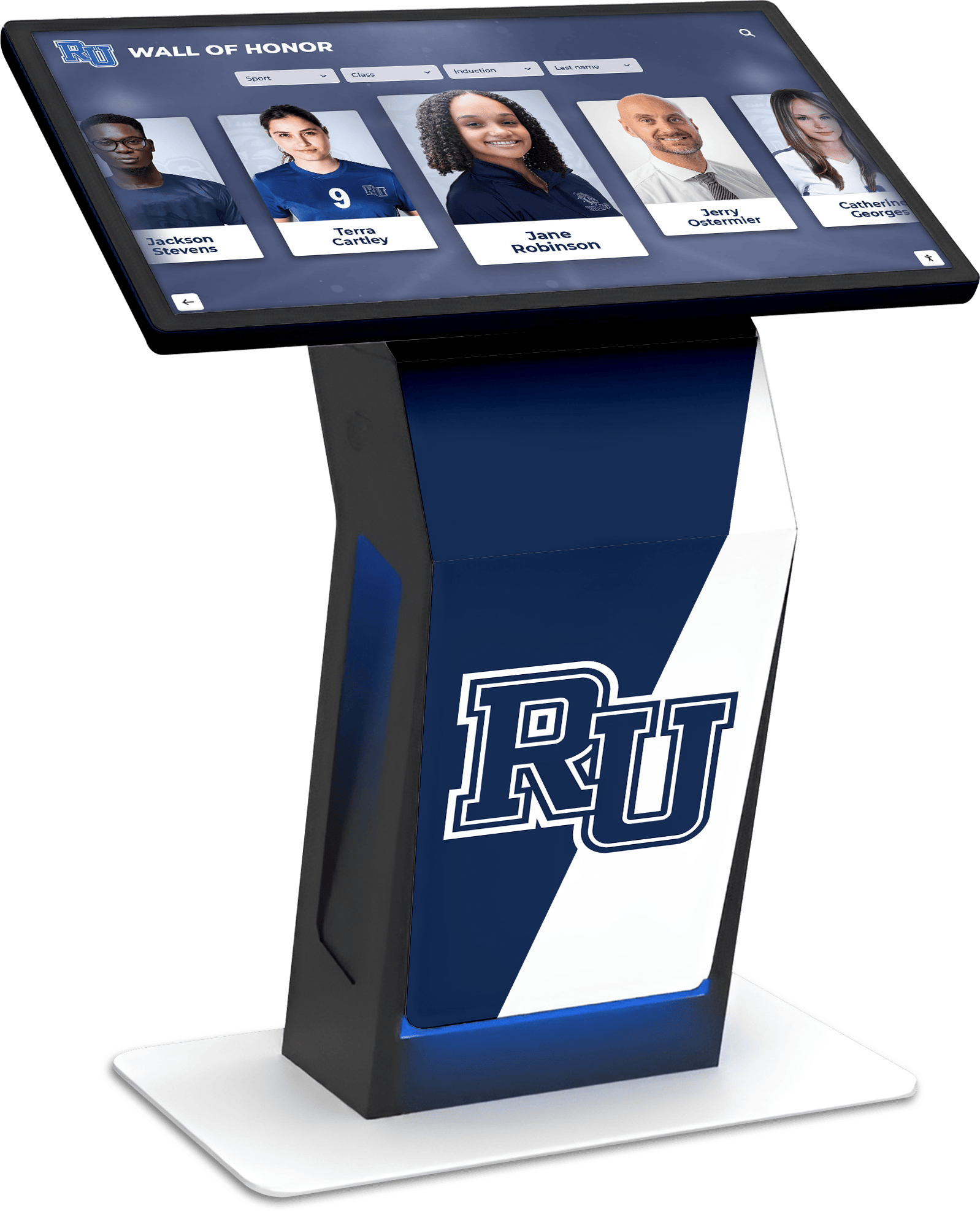Athletic directors, principals, and facilities managers face a common challenge: traditional trophy cases have run out of space, yet championships keep accumulating and achievements deserve recognition. As schools explore digital trophy case solutions, the purchasing process can feel overwhelming given the variety of options, price points, and technical considerations.
This comprehensive buying guide walks through the entire decision-making process, from defining your requirements and establishing budgets to evaluating vendors and planning successful implementations. Whether you’re replacing aging physical trophy cases, supplementing existing displays with digital alternatives, or launching recognition programs from scratch, this guide provides actionable frameworks for making informed purchasing decisions that serve your school community effectively for years to come.
Assessing Your School’s Recognition Needs
Before evaluating specific products or vendors, successful buyers begin by clearly defining what they need from digital trophy case systems.
Identifying Your Recognition Objectives
Different schools pursue digital trophy cases for different reasons, and your primary objectives shape which features and capabilities matter most.
Space Constraint Solutions: Schools with overflowing trophy cases or extensive collections in storage prioritize unlimited digital capacity. The ability to showcase hundreds or thousands of achievements without physical space limitations becomes the driving requirement, making content management capabilities and organizational structures particularly important.
Enhanced Engagement Goals: Schools seeking to increase student interaction with athletic history emphasize touchscreen interactivity and search capabilities. Features like filtering by sport or year, searching athlete names, and multimedia content become evaluation priorities since these capabilities transform passive displays into engaging experiences.
Modernization Initiatives: Schools updating facilities or embracing technology focus on aesthetic integration and contemporary appeal. Display design, mounting flexibility, and visual polish matter significantly as these installations represent broader institutional commitments to modern learning environments.
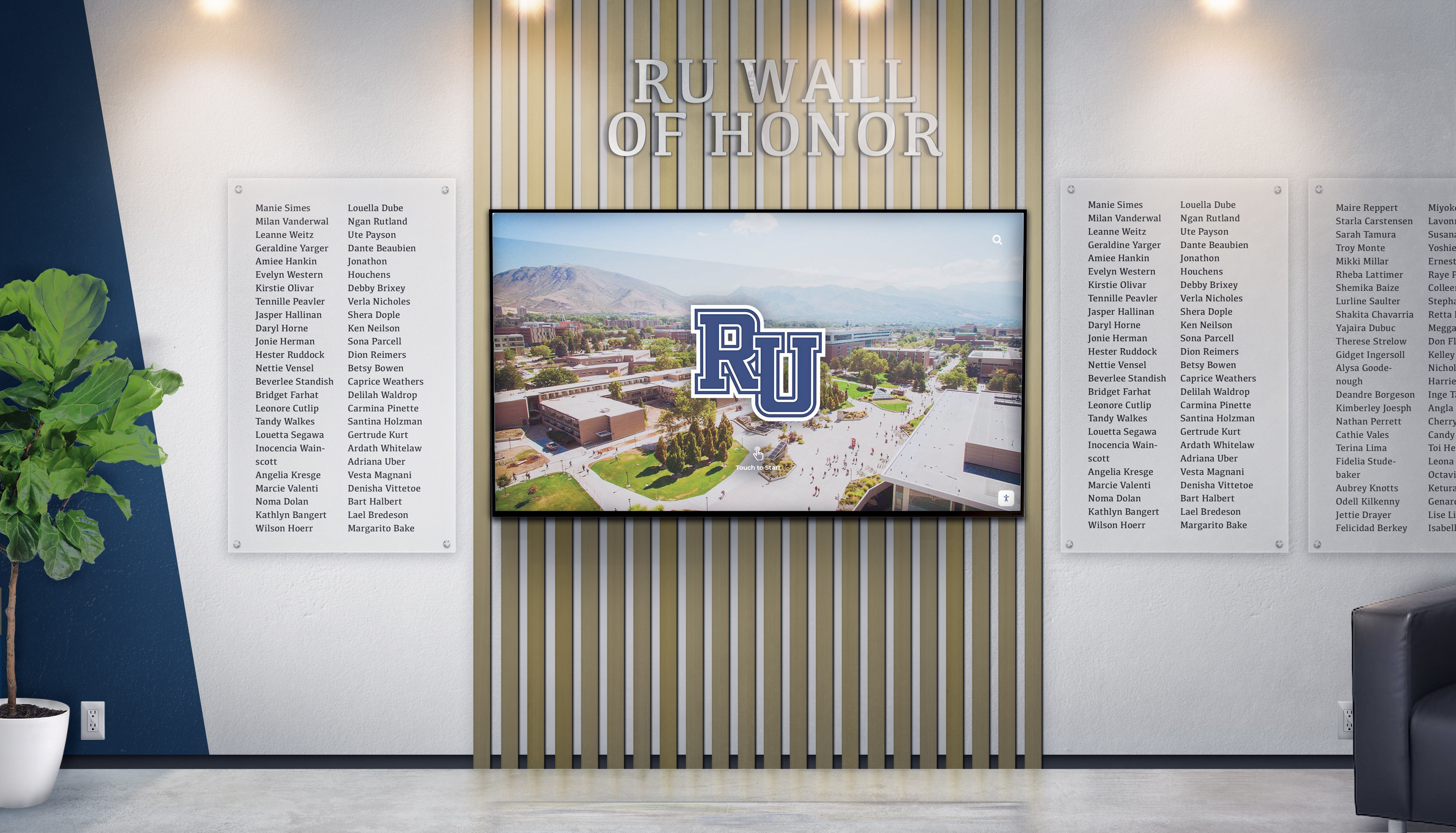
Alumni Engagement Enhancement: Schools strengthening alumni connections prioritize features enabling online access, social sharing, and alumni contributions. Web-based platforms extending beyond physical displays, mobile responsiveness, and content submission capabilities become key evaluation criteria.
Operational Efficiency Needs: Schools where staff time is limited emphasize ease of content updates and minimal maintenance requirements. Intuitive content management systems, template-based entry creation, and reliable hardware requiring little upkeep become paramount considerations.
Understanding your primary objectives helps prioritize features during evaluation and ensures purchased systems actually solve problems you’re trying to address rather than simply offering impressive capabilities you don’t particularly need.
Conducting Trophy Collection Inventory
Realistic planning requires understanding what you’re working with. Comprehensive inventory of your trophy collection informs capacity requirements, content development scoping, and budget planning.
Physical Trophy Assessment: Count all trophies currently displayed in cases, stored in closets or offices, residing in athletic director’s offices, and kept by coaches in team spaces. Many schools discover they have 2-3 times more trophies than they realized once storage areas are thoroughly searched.
Content Beyond Physical Trophies: Consider all recognition-worthy content including championship team photos, individual award certificates, newspaper clippings and media coverage, retired jerseys and special items, coaching milestone recognitions, and historical documents or programs.
Digital systems can accommodate diverse content types, not just physical trophies, so comprehensive inventories reveal full scope of content development work required.
Historical Depth Assessment: Determine how far back you want digital archives to reach. Some schools focus on recent decades where information is readily available. Others undertake comprehensive historical projects documenting entire institutional histories. Understanding historical ambitions helps scope content development work and budget appropriate resources.
Stakeholder Input and Buy-In
Successful implementations involve key stakeholders early in the process rather than presenting finished purchase decisions.
Athletic Department Input: Athletic directors and coaches provide essential perspectives on sports-specific recognition needs, trophy organization preferences, and operational workflow considerations. Their buy-in proves critical since they typically manage ongoing content updates after implementation.
Technology Staff Consultation: IT departments address infrastructure requirements, network security considerations, device management policies, and technical support capabilities. Early involvement prevents costly surprises about network upgrades or support limitations discovered after purchases are finalized.
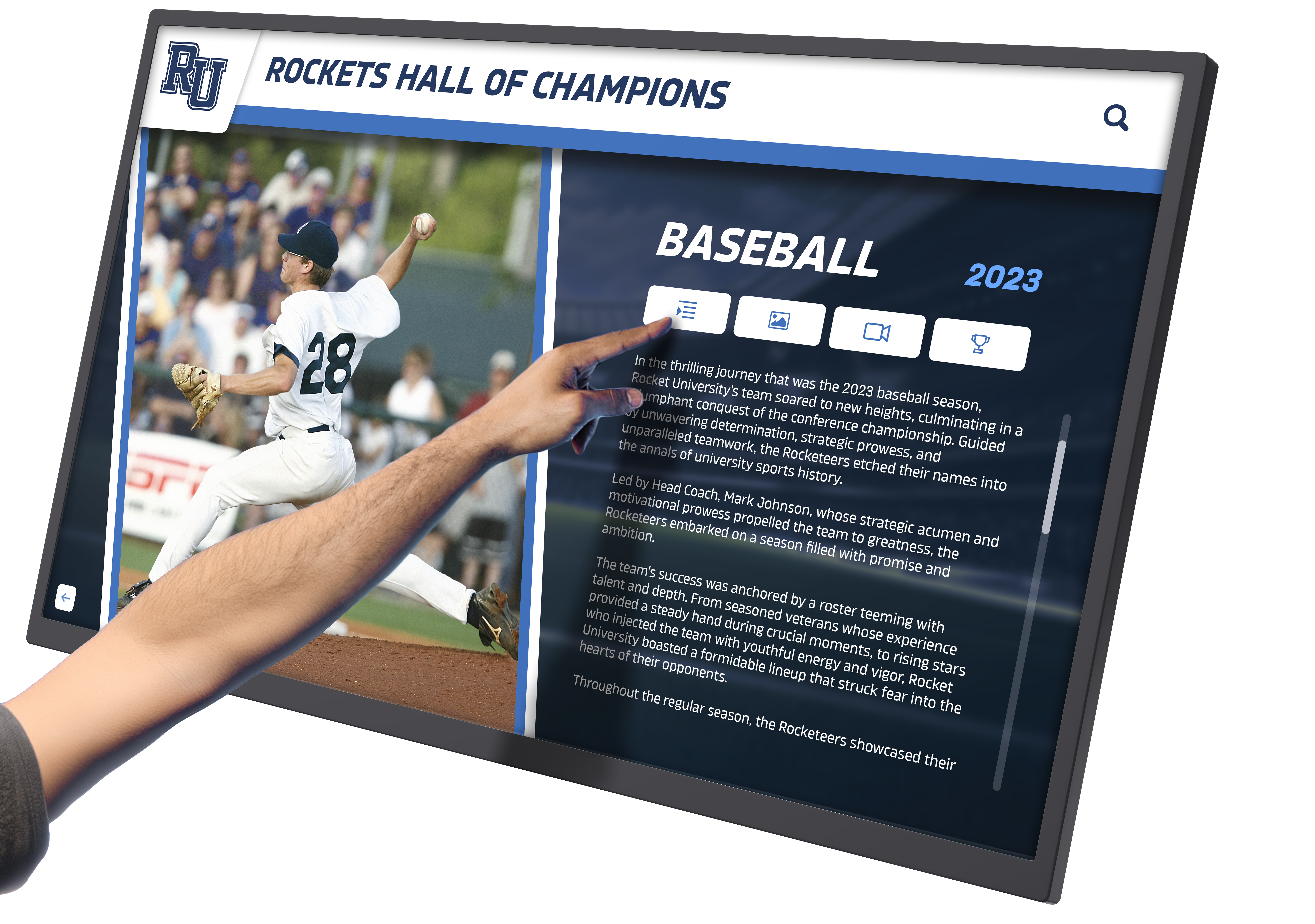
Administrative Approval: Principals and superintendents must support budgets and recognize strategic value. Demonstrating how digital trophy cases advance school goals beyond simply solving trophy storage problems helps secure necessary approvals and funding.
Facilities Management Coordination: Maintenance staff and facilities managers address installation logistics, power and network access, ongoing cleaning and care, and physical security. Their practical insights about placement and maintenance prevent implementation challenges.
Gathering diverse perspectives during planning improves decision quality and builds organizational support essential for successful long-term utilization.
Understanding Digital Trophy Case Components
Digital trophy case systems comprise multiple integrated elements, and understanding each component helps evaluate options intelligently.
Display Hardware Essentials
The touchscreen display forms the visible centerpiece of digital trophy cases, and hardware selections significantly impact user experience and longevity.
Screen Size Considerations: Display sizing depends on viewing distance and installation location. For hallway installations where viewers stand 6-10 feet away, 55-65 inch displays provide excellent visibility without overwhelming spaces. Larger lobbies or gymnasiums may accommodate 70-75 inch displays visible from greater distances. Smaller 43-50 inch displays work well in intimate spaces like athletic offices or team rooms.
Bigger screens cost more but don’t always improve experiences—oversized displays in small spaces can overwhelm viewers, while undersized displays in large spaces fail to attract attention from passing traffic.
Touch Technology Options: Two primary touch technologies dominate commercial installations. Capacitive touchscreens (similar to smartphones) offer highly responsive multi-touch experiences but cost more, particularly in larger sizes. Infrared touch overlays provide good responsiveness at lower costs but may have slightly less sensitivity. Both technologies work well for trophy case applications where precise gestures aren’t required.
Commercial vs. Consumer Displays: Commercial displays designed for continuous public use cost more than consumer televisions but offer important advantages: 16-18 hour daily operation ratings versus 8-10 hours for consumer models, enhanced brightness (400-700 nits) suitable for well-lit public spaces, simplified bezel designs without consumer TV branding, and extended warranty options appropriate for institutional use.
Consumer displays used in public settings often fail within 1-2 years, making apparent initial savings illusory when replacement costs and downtime are considered.
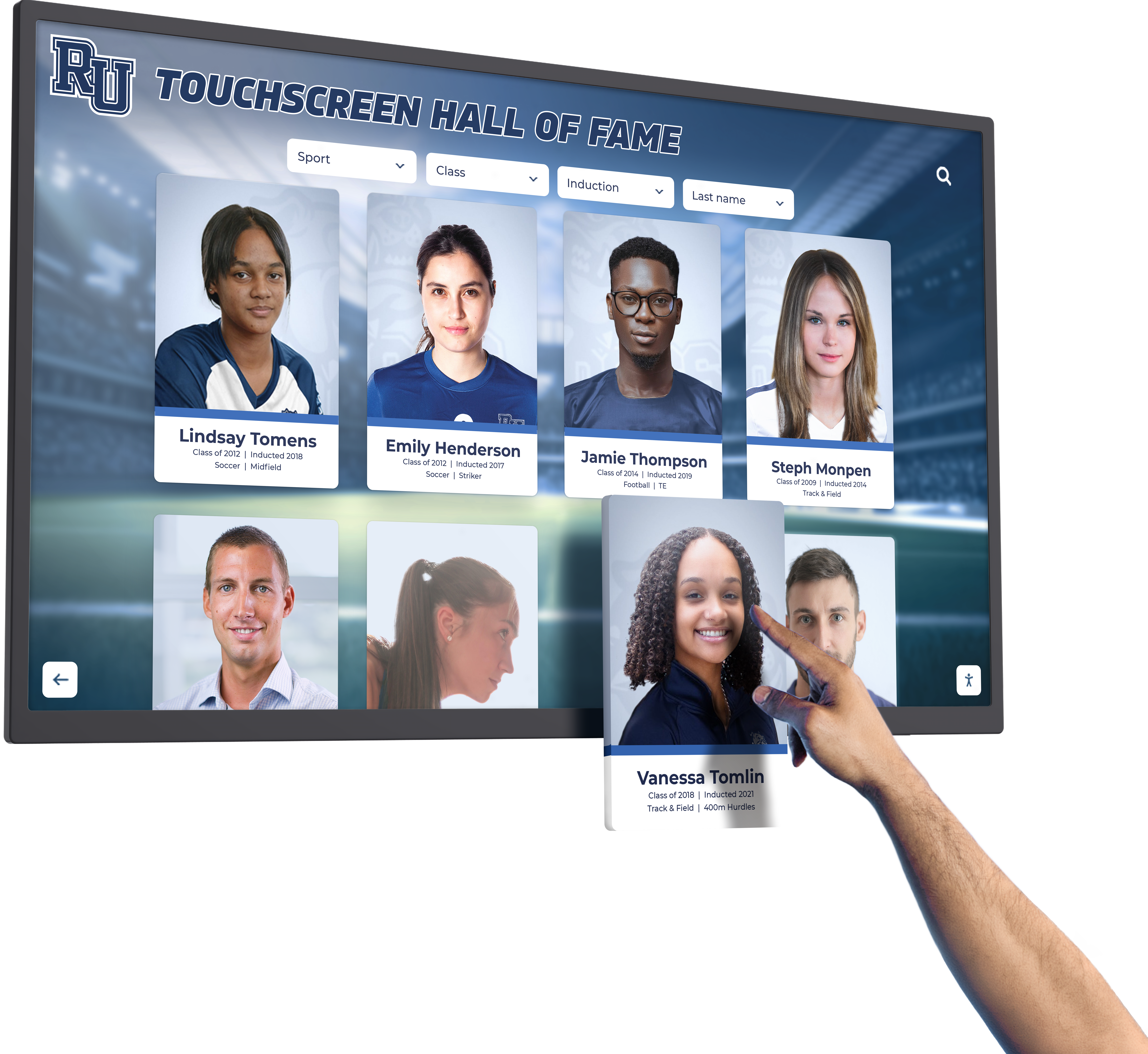
Media Player Requirements: Displays require computing hardware to run software and manage content. Modern systems typically use compact mini-PC computers with sufficient processing power (Intel i5 or equivalent), adequate RAM for smooth operation (8-16GB typical), solid-state storage for reliability and speed (128-256GB common), and appropriate connectivity including HDMI, USB, and network ports.
Some all-in-one displays include built-in computing hardware, simplifying installation but potentially complicating future upgrades or repairs.
Software Platform Capabilities
Software determines what content you can display, how users interact with it, and how easily staff can manage updates.
Content Management Systems: Cloud-based content management systems (CMS) allow authorized staff to add, edit, and organize content from any internet-connected device without requiring physical access to displays. Key CMS capabilities include template-based content creation for consistent professional appearance, drag-and-drop media upload for photos and videos, scheduling tools for rotating featured content, user permission management for controlled access, and version control and backup for data protection.
Purpose-built recognition platforms like those from Rocket Alumni Solutions offer significant advantages over generic digital signage software since they’re designed specifically for trophy and achievement recognition with appropriate templates, organizational structures, and features.
User Interface Design: Front-end interfaces determine how visitors interact with trophy case content. Effective interfaces feature intuitive navigation requiring no instructions, clear visual hierarchy emphasizing important information, responsive design adapting to different screen sizes and orientations, accessibility features supporting users with disabilities, and engaging visual design that attracts and maintains attention.
Many schools request demo units or trial periods to evaluate actual user experience before committing to purchases, since interface quality proves difficult to assess from marketing materials alone.
Search and Filtering Capabilities: Interactive trophy cases benefit tremendously from robust search functionality allowing visitors to quickly locate specific content. Essential search features include text search across athlete names, team names, and keywords, filter options by sport, year, achievement type, or other categories, related content suggestions connecting associated achievements, and search result highlighting for easy scanning.
Generic digital signage platforms often lack sophisticated search capabilities since they’re designed primarily for passive content display rather than interactive exploration.
Installation and Infrastructure Requirements
Physical installation and technical infrastructure significantly impact total project costs and implementation timelines.
Mounting Options: Digital trophy cases can be installed multiple ways depending on space characteristics and aesthetic preferences. Wall-mounted installations save floor space and create clean modern appearances but require suitable wall structures and professional installation. Freestanding kiosk enclosures offer placement flexibility and can be repositioned as needs change but consume floor space. Custom millwork integration embeds displays within architectural elements for seamless facility integration but involves highest costs and least flexibility.
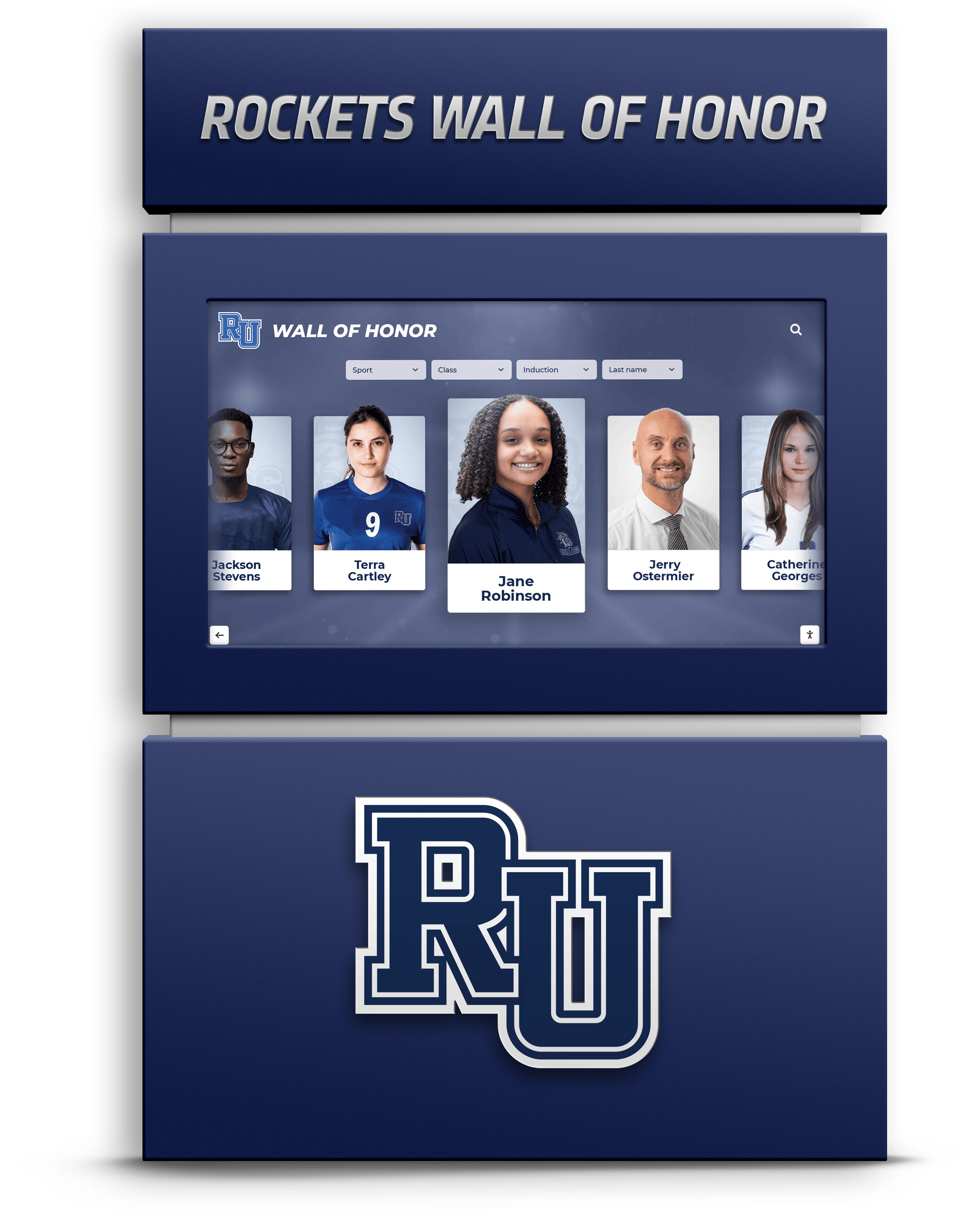
Understanding available mounting options and associated costs helps budget realistically and plan installations that work within facility constraints.
Network Connectivity: Cloud-based systems require reliable network access for content updates and remote management. Ethernet connections provide most reliable connectivity when available at installation locations. WiFi works well with strong consistent signals but may require access point installation if existing coverage proves inadequate. Cellular backup options using LTE/5G hotspots provide redundancy ensuring systems remain operational during network interruptions.
Involve IT departments early to assess connectivity at proposed installation locations and budget for infrastructure upgrades if necessary.
Power Requirements: Commercial displays typically consume 150-300 watts during operation, requiring standard 120V electrical outlets. Consider surge protection to safeguard equipment investments, outlet locations relative to desired mounting positions, and whether new electrical circuits require installation if existing outlets aren’t conveniently located.
Physical Security: Public installations require security considerations including tamper-resistant mounting hardware, kiosk enclosures with locking access panels for freestanding units, cable management concealing and protecting connections, and placement in monitored areas with appropriate supervision.
Physical security protects equipment investments while preventing damage or vandalism that disrupts operations.
Budget Planning and Cost Analysis
Digital trophy case investments involve multiple cost categories, and comprehensive budget planning prevents surprises during implementation.
Initial Hardware Investment
Hardware represents the largest upfront cost component for most implementations.
Display Hardware Costs: Commercial touchscreen displays: $2,500-$8,000 depending on size (43" to 75") and features. Premium models with enhanced brightness, advanced touch technology, or specialized features command higher prices. Bulk purchasing multiple displays may yield volume discounts from suppliers.
Mounting and Installation: Wall mounting hardware and professional installation: $500-$2,000 depending on complexity. Simple installations on suitable walls cost less. Complex installations requiring structural work, conduit runs for cables, or custom millwork cost substantially more.
Freestanding kiosk enclosures: $1,500-$4,000 depending on materials, features, and customization. Basic powder-coated steel enclosures cost less. Custom-designed kiosks matching school branding with premium materials and integrated features cost more.
Computing Hardware: Media player computers or integrated computing systems: $400-$1,200 depending on specifications and form factor. Higher performance systems supporting 4K content or multiple displays cost more than basic systems adequate for single HD displays.
Total Hardware Range: Complete hardware packages typically range from $4,000-$15,000 per display installation depending on size, mounting approach, and feature selections. Smaller displays with basic wall mounting fall toward lower range. Large premium displays with custom kiosk enclosures approach upper range.
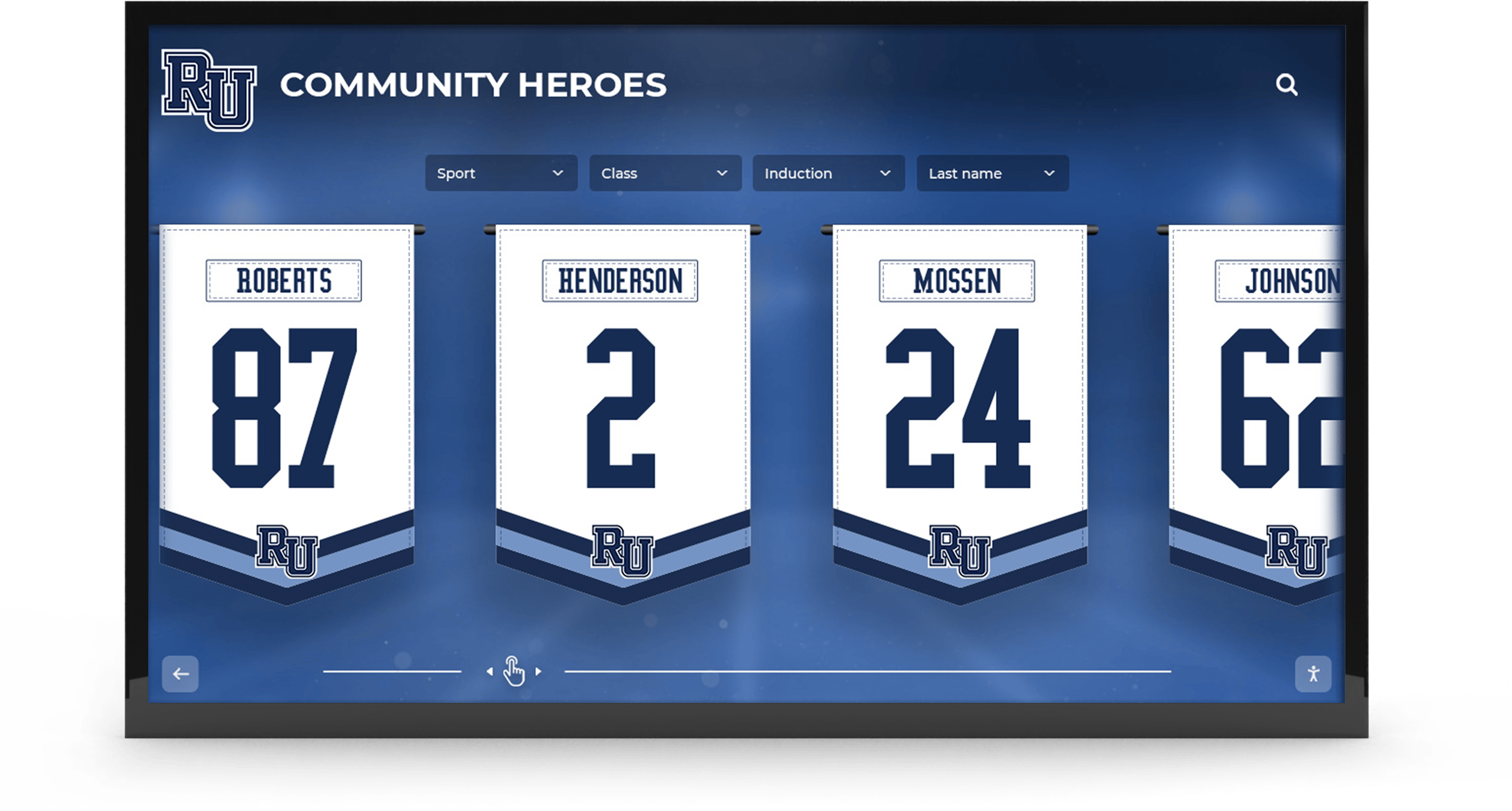
Software and Platform Licensing
Software costs represent ongoing operational expenses requiring annual budget allocation.
Platform Licensing Models: Most professional recognition platforms use subscription licensing with annual fees. Typical licensing costs range from $1,200-$6,000 annually depending on features selected, number of display installations, content storage capacity, user accounts and permission levels, and support services included.
Some vendors offer perpetual licensing with one-time fees plus optional maintenance contracts, but cloud-based subscription models have become industry standard due to continuous improvements, automatic updates, and included hosting infrastructure.
What Licensing Typically Includes: Standard platform licenses generally include cloud hosting and content storage, regular software updates and feature additions, technical support via phone, email, or chat, content management system access, mobile and web responsive designs, basic analytics and reporting, and security updates and patches.
Verify exactly what’s included in licensing agreements since vendors structure offerings differently and additional fees may apply for premium features, extra users, or enhanced support levels.
Implementation Services: Initial setup and configuration: $500-$2,000 depending on complexity. Basic implementations with standard templates cost less. Custom design work, complex integrations, or specialized requirements increase service costs.
Content Development Investment
Creating quality content for digital trophy cases requires significant effort that translates to real costs whether handled internally or outsourced.
Professional Photography Services: Comprehensive trophy photography by professional services: $2,000-$6,000 depending on collection size. Professionals typically charge $10-$20 per trophy including setup, multiple angles, editing, and file delivery. Collections of 200-400 trophies require $2,000-$8,000 in photography services.
Alternatively, schools can photograph trophies using staff time and smartphones. While this saves direct costs, budget 15-20 minutes per trophy for setup, photography, and basic editing, consuming substantial staff time.
Data Entry and Profile Creation: Creating detailed achievement profiles with descriptions, statistics, and context: $1,500-$5,000 depending on depth and quantity. Professional content services charge $10-$30 per profile depending on research requirements and complexity.
Schools handling data entry internally should budget 15-30 minutes per achievement profile for research, writing, and entry, representing 50-100+ hours for comprehensive collections of 200+ achievements.
Phased Content Development: Many schools implement phased approaches, launching with high-priority recent content (past 5-10 years) initially, then gradually expanding historical coverage. This spreads content development costs over multiple budget years while enabling earlier launches demonstrating value.
Long-Term Operational Costs
Beyond initial implementation, ongoing costs continue throughout system lifespans.
Annual Software Licensing: $1,200-$6,000 annually as discussed above, representing primary ongoing expense for cloud-based platforms.
Content Management Labor: Staff time for ongoing updates, typically 2-5 hours monthly for athletic departments adding new achievements and refreshing featured content. At $30-$50 per hour loaded cost, represents $720-$3,000 annually in staff time.
Maintenance and Repairs: Commercial displays typically require minimal maintenance beyond periodic screen cleaning. Extended warranty coverage: $200-$500 annually depending on coverage level. Set aside contingency budget for unexpected repairs or replacements.
Electricity Costs: Displays operating 12 hours daily consume approximately 1.8-3.3 kWh daily, or 650-1,200 kWh annually. At $0.12 per kWh, represents $80-$150 annually per display—minimal but worth including in operational budgets.
Total Annual Operating Costs: Typical annual operating budgets range from $2,000-$10,000 depending on licensing level, content management approach, and maintenance needs. This compares favorably to ongoing costs of traditional trophy case expansions, new trophy purchases, and physical display modifications that digital systems eliminate.
Return on Investment Considerations
While some costs prove difficult to quantify precisely, comprehensive ROI analysis should consider both cost avoidance and value creation.
Cost Avoidance: Digital trophy cases eliminate recurring expenses including new trophy case purchases ($2,000-$5,000 per case every few years), physical trophy and plaque production for items that never fit in limited display space ($1,000-$3,000 annually), professional installation labor for physical display modifications ($500-$1,500 annually), and maintenance materials and labor for physical case upkeep.
Value Creation: Digital systems generate value through comprehensive recognition improving school culture, enhanced recruiting impressions for prospective athletes, stronger alumni engagement supporting development, preserved institutional history more durable than physical artifacts, and improved space utilization freeing trophy case locations for other purposes.
Schools implementing digital trophy cases consistently report satisfaction with investments when evaluating both tangible cost impacts and intangible value creation.
Vendor Evaluation Framework
Multiple vendors offer digital trophy case solutions, and systematic evaluation helps identify best fits for your specific requirements.
Vendor Category Comparison
Digital trophy case vendors fall into several categories with different strengths and limitations.
Purpose-Built Recognition Platforms: Vendors specializing in school and alumni recognition offer platforms designed specifically for trophy cases, halls of fame, and achievement displays. These solutions provide trophy-specific templates and organizational structures, intuitive content management for non-technical staff, recognition-focused search and navigation features, built-in best practices from extensive education sector experience, and dedicated support teams understanding school needs.
Leading purpose-built platforms like Rocket Alumni Solutions, Social Assay, and RiseVision Recognition focus exclusively on recognition applications and develop features addressing specific school requirements.
Generic Digital Signage Platforms: Broad digital signage vendors serve multiple industries with flexible platforms adaptable to various applications. These solutions offer lower-cost entry points for basic implementations, broad feature sets supporting diverse content types, established platforms with large user bases, and extensive integration options with third-party tools.
However, generic platforms require more customization to work well for trophy recognition, lack recognition-specific templates and features, and may offer less relevant support since education recognition represents small portion of their business focus.
Custom Software Development: Schools with significant technical resources sometimes pursue custom-developed solutions built specifically for their needs. Custom development provides complete control over features and design, perfect alignment with unique requirements, and no ongoing licensing costs to external vendors.
However, custom development involves high upfront costs ($20,000-$100,000+ typical for quality applications), extended development timelines (6-12+ months common), ongoing maintenance and updates requiring continued development resources, and risk that developers move on leaving unsupported systems.
For most schools, purpose-built platforms offer best value combinations of relevant features, reasonable costs, and sustainable long-term support.
Key Vendor Evaluation Criteria
Systematic evaluation across consistent criteria helps compare vendors objectively.
Product Capabilities: Does the platform support all content types you need (trophies, team rosters, statistics, photos, videos)? Does it offer intuitive navigation and search? Is the user interface professionally designed and engaging? Does it include mobile and web access beyond physical displays? Can it accommodate your full trophy collection and future growth?
Request detailed demonstrations focusing on your specific use cases rather than generic feature tours. Better yet, request trial access allowing hands-on evaluation with your actual content.
Ease of Use: Can non-technical staff manage content without extensive training? Is the content management system intuitive? Are templates provided for common content types? How much time does adding new achievements require? What learning curve should be expected?
Consider having staff who will actually manage content participate in evaluations since their experience matters more than technical administrators’ assessments.

Implementation Support: What implementation services are included versus charged separately? Does the vendor handle installation and configuration? Is training provided for staff? What is typical implementation timeline? How hands-on is vendor support during launch?
Understanding exactly what’s included in implementation packages prevents surprise costs and ensures successful launches.
Customer Support: What support channels are available (phone, email, chat, onsite)? What are support hours and response time commitments? Is support included in licensing or charged separately? Are there active user communities or resource libraries? Can you contact reference customers about support experiences?
Strong ongoing support proves crucial for long-term satisfaction, particularly when staff turnover requires re-training or when technical issues arise.
References and Case Studies: Can the vendor provide references from schools similar to yours? Are there installations you can visit and see firsthand? What do current customers identify as strengths and weaknesses? How long have reference customers been using the platform? Would they make the same purchase decision again?
Direct conversations with current customers provide invaluable insights beyond vendor marketing materials.
Financial Stability and Roadmap: Is the vendor financially stable with sustainable business models? How long have they been operating? What is their product roadmap and development trajectory? Are they investing in platform improvements? What percentage of customers renew licenses annually?
Purchasing from vendors with uncertain futures risks finding yourself with unsupported systems requiring replacement investments sooner than expected.
Making the Purchase Decision
With needs defined, options evaluated, and budgets established, structured decision processes help finalize purchases confidently.
Request for Proposal Development
For significant investments, many schools issue formal Requests for Proposals (RFPs) soliciting competitive bids from vendors.
RFP Key Components: Comprehensive RFPs should include clear project background and objectives, detailed technical requirements and specifications, content and capacity expectations, timeline requirements for implementation, budget parameters and payment preferences, evaluation criteria and weighting, reference requirements and expectations, and submission instructions and deadlines.
Well-developed RFPs enable apples-to-apples vendor comparisons and establish clear expectations from project beginning.
Evaluation Team Composition: Assemble cross-functional evaluation teams including athletic leadership understanding recognition needs, technology staff assessing technical specifications, administrative representatives overseeing budgets, facilities managers addressing installation logistics, and potentially students or alumni providing user perspective.
Diverse evaluation perspectives improve decision quality and build organizational buy-in.
Demonstrations and Trials
Before finalizing purchases, invest time in thorough vendor demonstrations and hands-on trials.
Effective Demonstration Strategies: Request customized demonstrations using your actual content rather than generic vendor demos. Have staff who will manage systems participate actively. Test specific scenarios and workflows relevant to your operations. Evaluate user interface from student/visitor perspective. Ask detailed questions about limitations and workarounds. Request unedited footage or access to live installations rather than polished sales presentations.

Trial Period Value: Many vendors offer trial periods allowing hands-on evaluation before purchase commitments. Use trials to upload sample content and evaluate ease of use, test content management workflows, gather staff and student feedback, identify any limitations or concerns, and validate that solutions meet expectations in practice rather than theory.
Trial periods reduce purchase risk substantially by enabling informed decisions based on direct experience.
Negotiation Strategies
Even with published pricing, vendors often have flexibility on terms, particularly for multi-year commitments or multi-display installations.
Negotiable Elements: Explore flexibility on implementation service costs and inclusions, multi-year licensing discounts for upfront commitments, bundled pricing for multiple display installations, payment terms spreading costs across fiscal years, included training or additional support, content development service packages, and warranty or maintenance extensions.
Educational institutions often receive preferred pricing—ensure you’re receiving available education discounts.
Total Cost of Ownership Focus: Evaluate complete long-term costs rather than just initial purchase prices. Lower upfront costs may come with higher ongoing fees or limited support. Higher initial investments with comprehensive support and inclusive licensing may prove more economical over system lifespans.
Consider 5-year total cost scenarios accounting for initial implementation, annual licensing, content development, and support needs when comparing options.
Implementation Planning and Project Management
Successful implementations require thoughtful planning and project management beyond simply purchasing systems.
Pre-Installation Preparation
Lay groundwork for smooth installations through thorough pre-implementation planning.
Site Preparation: Verify network connectivity at installation locations and upgrade if necessary. Ensure appropriate power outlets are available and properly positioned. Confirm wall structures can support wall-mounted installations. Clear installation areas and coordinate access for installation teams. Communicate installation schedules to affected departments and coordinate around school schedules.
Content Readiness: Begin content development before hardware installation so systems can launch with substantial content rather than empty displays. Photograph priority trophies and create initial achievement profiles. Organize digital assets systematically. Develop content standards and style guides. Train staff on content management systems.
Launching with rich content creates immediate engagement rather than promising “we’ll add content soon”—promises that often go unrealized.
Staff Training Planning: Identify who will manage ongoing content updates. Schedule training sessions with vendors before installation completion. Develop internal documentation capturing procedures. Plan for cross-training ensuring multiple staff members can manage systems.
Effective training ensures systems remain current and valuable rather than becoming static installations that never get updated.
Installation Coordination
Professional installation requires coordination between vendors, school staff, and potentially contractors.
Installation Timeline: Typical installation timelines span 1-3 weeks from equipment arrival to completed configuration including hardware installation and mounting (1-3 days), network and power connection (1-2 days), software configuration and content upload (3-5 days), testing and quality assurance (1-2 days), and final training and handoff (1 day).
Complex installations with multiple displays or extensive custom work require longer timelines—communicate realistic expectations to stakeholders.
Quality Assurance Testing: Before accepting installations as complete, systematically test all functionality including touchscreen responsiveness across entire display surface, content display and navigation, search functionality, multimedia playback, network connectivity and content updates, and any interactive features or integrations.
Document any issues immediately and ensure vendors address them before final acceptance.

Launch and Promotion
Maximize initial engagement through strategic launch planning and promotion.
Launch Event Planning: Consider hosting formal unveiling events during high-visibility occasions like homecoming, championship celebrations, or alumni reunion weekends. Demonstrate system features to attendees. Recognize contributors to implementation. Generate excitement and awareness through launches rather than quietly installing systems without fanfare.
Communication and Marketing: Promote new digital trophy cases through school newsletters and announcements, social media showcasing features and content, website updates with online access information, local media coverage highlighting innovation, and signage directing visitors to display locations.
Active promotion ensures community members know about and utilize new recognition resources.
Engagement Monitoring: Track early usage patterns through platform analytics. Solicit feedback from students, alumni, and visitors. Monitor which content attracts most interest. Identify any usability issues or confusion. Adjust content presentation and organization based on actual usage patterns.
Early attention to engagement helps optimize systems while interest is high rather than allowing installations to become background fixtures that people ignore.
Common Pitfalls and How to Avoid Them
Learn from others’ experiences to avoid common digital trophy case implementation challenges.
Inadequate Content Development Planning
The most common implementation failure involves purchasing excellent hardware and software but never developing sufficient content to make systems valuable.
The Problem: Schools underestimate content development work required, lack clear responsibility assignments for content creation, focus entirely on initial setup without planning ongoing updates, and launch with minimal content promising to “add more later” but never doing so.
The Solution: Budget appropriate resources for comprehensive content development, assign clear responsibilities for initial content creation and ongoing updates, implement phased content approaches with realistic timelines, establish content quality standards and templates, and consider professional content development services for initial population. Systematically digitizing your trophy collection requires dedicated effort but proves essential for successful recognition systems.
Poor Location Selection
Display placement dramatically impacts utilization—poorly located installations fail to engage audiences despite excellent functionality.
The Problem: Displays installed in low-traffic areas where few people pass, positioned in poor lighting conditions reducing visibility, placed at awkward viewing angles or heights, competing with other distractions in busy spaces, or located in areas with inadequate network connectivity or supervision.
The Solution: Carefully assess high-traffic locations including main hallways near athletic facilities, lobbies and entrances where visitors naturally gather, areas near gymnasiums or competition venues, and alumni centers or development offices. Consider sight lines, lighting conditions, and traffic patterns. Visit potential locations at different times of day. Consult facilities staff about practical considerations. Pilot with temporary placement if possible before permanent installation.
Insufficient Staff Training and Support
Systems managed by untrained staff become outdated quickly as updates stop happening.
The Problem: Only one staff member trained, creating single point of failure when they leave or are unavailable, inadequate training depth leaving staff uncertain about procedures, no documentation capturing processes for future reference, and assumption that intuitive systems require no training.
The Solution: Train multiple staff members ensuring coverage continuity, provide comprehensive training covering common tasks and troubleshooting, create written documentation with screenshots and procedures, schedule follow-up training sessions after initial period, and maintain ongoing relationship with vendor support for questions and assistance. Investment in training pays dividends through sustained system utilization and value.
Ignoring Integration Opportunities
Digital trophy cases work best integrated with broader recognition strategies rather than operating as isolated implementations.
The Problem: Trophy cases implemented without connection to alumni databases, websites, or social media, no process for cross-promoting between physical and digital recognition, missed opportunities to leverage content across multiple channels, and lack of coordination with broader institutional technology systems.
The Solution: Consider integration opportunities during planning including connections to alumni databases, website embedding or linking, social media sharing capabilities, QR codes linking physical displays to digital content, and coordination with other campus digital signage. Comprehensive recognition approaches leverage digital trophy content across multiple touchpoints rather than limiting value to single displays.
Future-Proofing Your Investment
Technology investments should serve schools effectively for many years, and thoughtful planning helps ensure longevity.
Scalability Considerations
Select solutions that can grow with your needs rather than requiring replacement when requirements change.
Content Capacity: Ensure platforms accommodate substantially more content than you currently envision—successful recognition programs typically grow beyond initial plans as engagement increases and historical content gets added. Verify no hard limits on entries, photos, or videos that might require costly upgrades later.
Multi-Display Support: Even if starting with single display, choose platforms easily supporting additional displays as programs expand. Centralized content management across multiple displays simplifies operations compared to managing independent systems.
Feature Expansion: Evaluate vendor roadmaps for planned feature additions. Platforms under active development continuously improve, while stagnant platforms risk obsolescence. Subscription licensing that includes updates provides access to improvements without additional costs.
Emerging Technology Trends
While avoiding bleeding-edge technology that may not mature, awareness of coming trends helps make informed decisions.
Artificial Intelligence Integration: AI capabilities increasingly enhance recognition platforms through automated content suggestions, personalized content recommendations, natural language search, intelligent photo tagging and organization, and analytics predicting engagement patterns.
Vendors investing in AI development position customers to benefit from these improvements as capabilities mature.
Enhanced Mobile Experience: Mobile access to recognition content continues improving with progressive web apps providing app-like experiences without installation requirements, QR code integration connecting physical and digital experiences, social sharing optimized for various platforms, and push notifications for new achievement additions.
Mobile-first platforms ensure recognition extends beyond physical displays to audiences wherever they are.
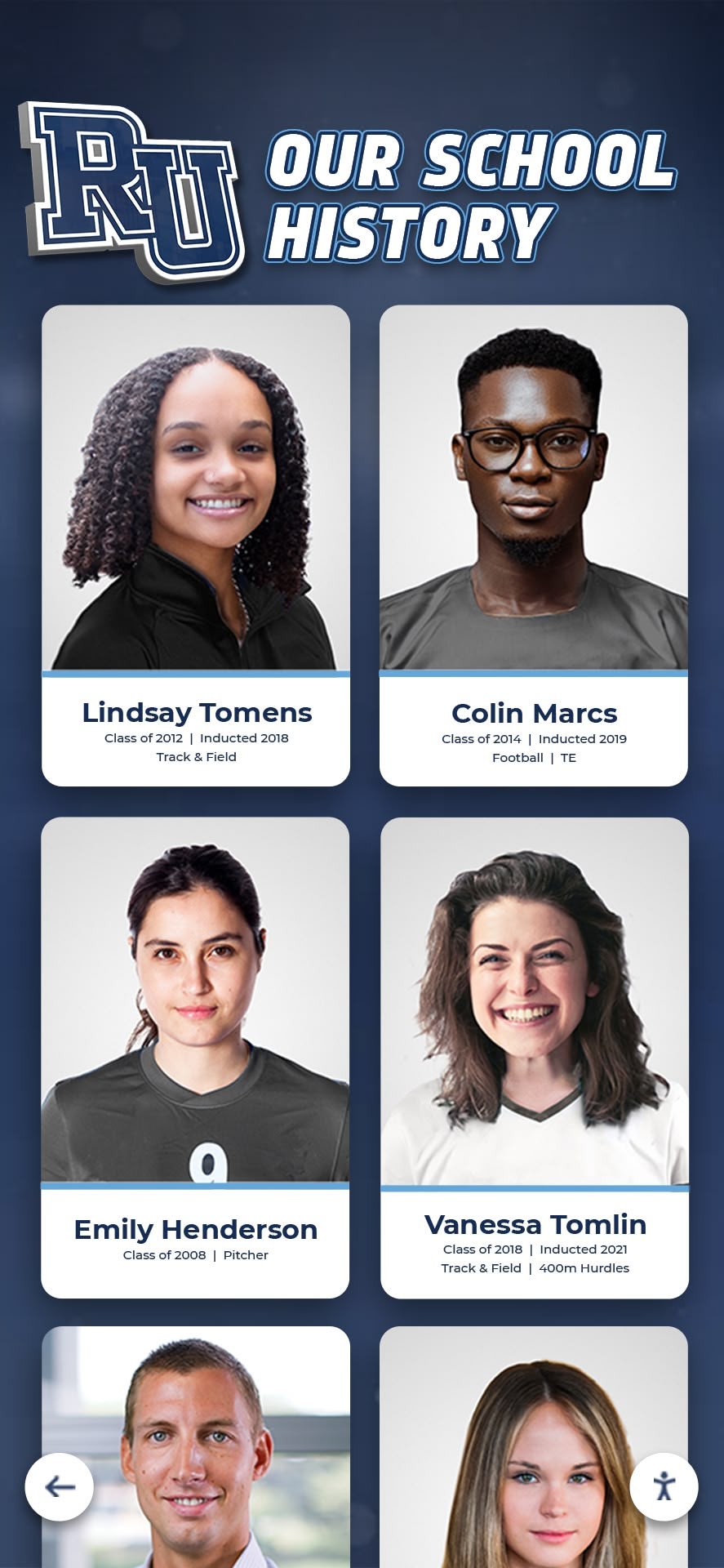
Analytics and Reporting: Advanced analytics increasingly help schools understand engagement including detailed usage patterns and popular content, demographic insights about who interacts with displays, return visitor tracking showing ongoing engagement, and correlation analysis connecting recognition to broader institutional metrics.
Data-informed recognition strategies prove more effective than intuition-based approaches.
Vendor Partnership Approach
View vendor relationships as ongoing partnerships rather than one-time transactions.
Regular Communication: Maintain periodic contact with vendor account teams, participate in user groups or advisory boards when available, provide feedback about features and improvements, and stay informed about platform updates and new capabilities.
Active participation in vendor relationships ensures your needs influence product development and you benefit from community knowledge sharing.
Annual Reviews: Schedule annual reviews evaluating system performance, analyzing engagement data and identifying trends, refreshing staff training as needed, assessing whether current licensing levels still fit needs, and planning content or feature enhancements for coming year.
Systematic reviews ensure systems continue delivering value and receive attention preventing drift toward irrelevance.
Conclusion: Making Confident Digital Trophy Case Investments
Purchasing digital trophy case systems represents significant investment requiring careful evaluation across multiple dimensions—from defining requirements and assessing options to planning implementations and ensuring long-term success. The variety of available solutions, vendors, and approaches can feel overwhelming, but systematic decision processes help schools make confident choices serving their communities effectively.
The most successful implementations share common characteristics: clear understanding of what problems they’re solving, realistic planning for content development work, appropriate vendor selection matching specific needs and resources, thoughtful implementation addressing technical and organizational factors, and sustained attention ensuring systems remain current and valuable over time.

Digital trophy cases transform how schools celebrate athletic achievement—honoring every championship and athlete rather than making impossible choices about what deserves limited physical space. When purchased thoughtfully and implemented effectively, these systems strengthen school culture, engage alumni, inspire current students, and preserve institutional history more effectively than traditional approaches ever could.
For schools ready to explore digital trophy case options, solutions like Rocket Alumni Solutions provide comprehensive platforms specifically designed for school recognition needs. Purpose-built recognition systems offer advantages over generic alternatives through relevant features, proven best practices, and dedicated support from teams understanding education environments.
The transition from physical trophy cases to digital recognition represents more than technology upgrades—it represents commitment to honoring every achievement, preserving complete institutional history, and creating engaging experiences that serve entire school communities. With careful planning and informed purchasing decisions, digital trophy cases deliver lasting value worthy of the investment required.
Ready to start your digital trophy case evaluation? Begin with clear assessment of your recognition needs, inventory your trophy collection, engage key stakeholders, and reach out to vendors for demonstrations and proposals. The time invested in thoughtful evaluation pays dividends through successful implementations serving your school effectively for years to come.
